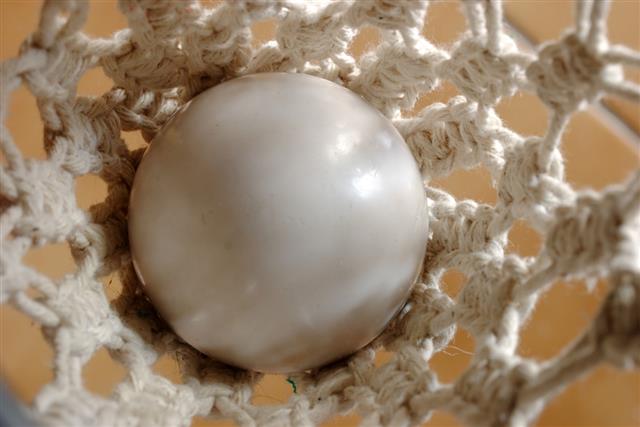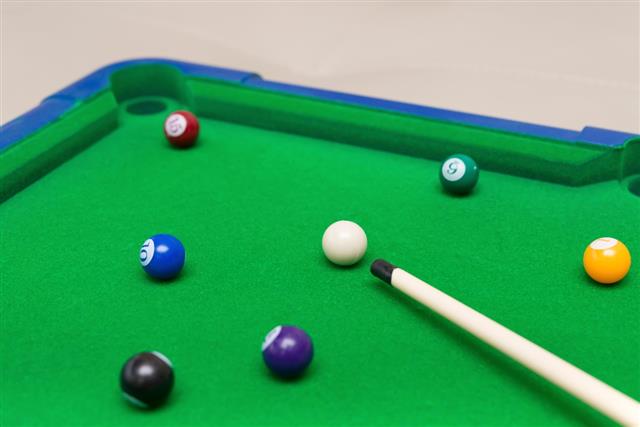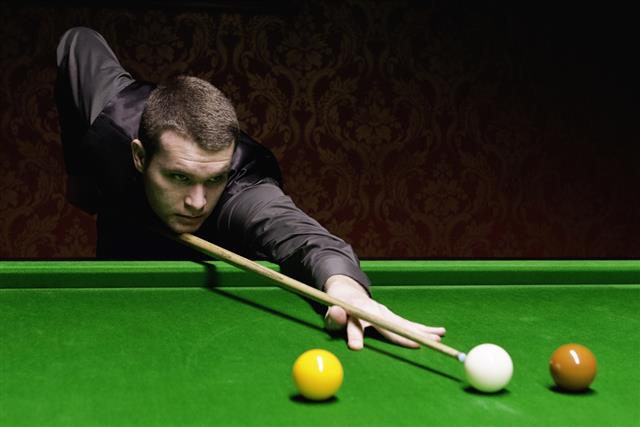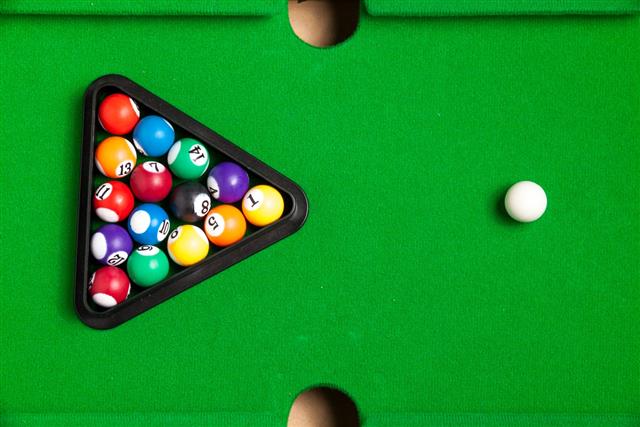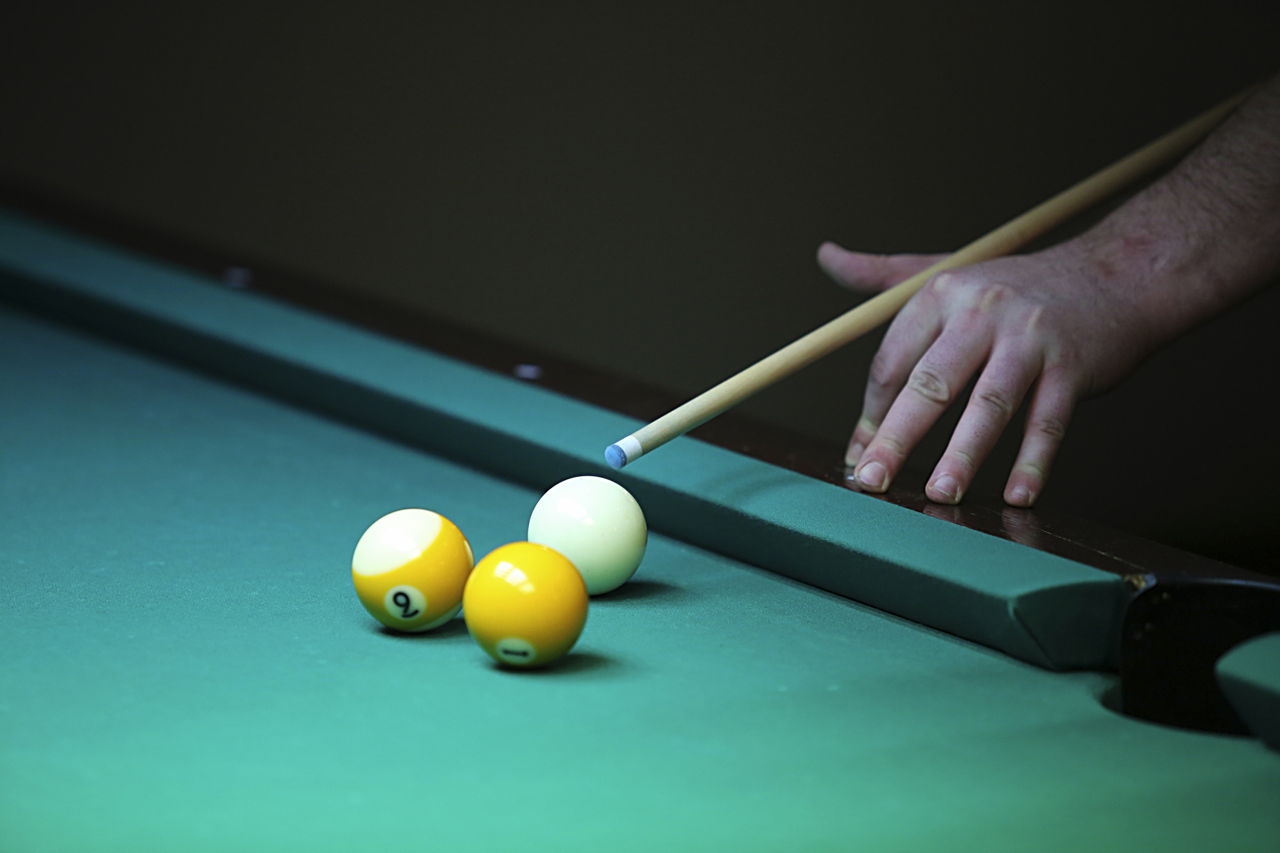
Billiards is played on a specially felt-tailored table which has six pockets. A set of colored balls are used which are hit with a cue stick to guide them into any one of the pockets. Comprising over 200 rules, billiards requires a high level of skill and concentration.
The first actual evidence of billiards was found in the 1470 inventory of King Louis XI of France, in the form of a billiards game board. However, the game is said to have originated earlier as an outdoor lawn game played as early as the 13th century. It was mostly played by the wealthy, and provided them with both entertainment as well as social status. There are a variety of games in billiards, such as 8-ball, 9-ball, cowboy billiards, snooker, and cut throat billiards, to name a few. There is also a form of the game known as carom billiards, which is played on a table which does not have any pockets at all.
Here are the basic rules that apply to most pocket billiard games.
Lag for Break: The following procedure is used for the lag for the opening break (nominating the player to commence the game). Each player holds a ball behind the head string on either side of the head spot. The balls are shot simultaneously to the foot cushion and rebound to the head cushion end. The player whose ball is closest to the head end cushion, wins the lag.
Racking the Balls: The balls are placed in a triangle using a frame, with the apex ball resting on the foot spot.
Striking the Cue Ball: The cue ball should be struck only with the cue tip, and failure to meet this requirement is a foul.
Opening Break Shot: The opening break shot is taken with the cue ball in hand behind the head string. The object balls should have already been positioned according to the specific rule games. The player winning the lag strikes first. The game is considered to have commenced once the cue ball has been struck by the cue tip and crosses the head string.
Failure to Pocket a Ball: If a player fails to pocket a ball with a legal shot, the player’s innings is considered over, and the next player’s turn commences. In case the ball/balls have been pocketed, the same player continues to play till he misses pocketing, or creates a foul.
Pocketed Balls: A ball is considered as a pocketed ball, if, as a result of a legal shot, it drops off the bed of the table into a pocket and remains there. A ball that rebounds from a pocket back onto the table bed is not a pocketed ball.
Foot on the Floor: It is a foul if a player shoots when at least one foot is not in contact with the floor. Footwear must be normal in regard to size, shape, and manner in which it is worn.
Shooting When the Ball is in Motion: It is a foul if a player shoots while the cue ball or any object ball is in motion (a spinning ball is also considered to be ‘in motion’). This will result in loss of the match by forfeiture.
Completion of a Stroke: A stroke is not complete (and therefore is not counted) until all balls on the table have become motionless after the shot.
Failure to Contact Object Ball: It is a foul, if on a stroke, the cue ball fails to make contact with any legal object ball first.
Legal Shot: Unless stated otherwise in a specific game rule, a player must cause the cue ball to contact a legal object ball first. Failure to meet this requirement is a foul.
Cue Ball Scratch: It is a foul (scratch), if on a stroke, the cue ball is pocketed. If the cue ball touches an object ball that was already pocketed (for example, in a pocket full of object balls), the shot is a foul.
Fouls by Touching Balls: It is illegal to strike, touch, or in any way make contact with the cue ball in play or any object balls in play with anything (the body, clothing, chalk, mechanical bridge, cue shaft, etc.), EXCEPT the cue tip (while attached to the cue shaft), which may only contact the cue ball in the execution of a legal shot.
Fouls by Double Hits: If the cue ball is touching the required object ball prior to the shot, the player may shoot towards it, providing that any normal stroke is employed. If the cue stick strikes the cue ball more than once on a shot, or if the cue stick is in contact with the cue ball when or after the cue ball contacts an object ball, the shot is a foul. If a third ball is close by, care should be taken not to foul that ball under the first part of this rule.
Push Shot Fouls: It is a foul if the cue ball is pushed by the cue tip, with contact being maintained for more than the momentary time commensurate with a stroked shot. (Such shots are usually referred to as push shots).
Jumping of the Ball: It is a foul if a player strikes the cue ball below the center (‘digs under’ it) and intentionally causes it to rise off the bed of the table, in an effort to clear an obstructing ball. Such a jumping action may occasionally occur accidentally, and while such accidental ‘jumps’ are usually not considered fouls on their face; they may still be ruled foul strokes.
Balls that Jump off the Table: Balls coming to rest other than on the bed of the table after a stroke (on the cushion top, rail surface, floor, etc.) are considered jumped balls. Balls may bounce on the cushion tops and rails of the table in play without being jumped balls if they return to the bed of the table under their own power and without touching anything not a part of the table. In all pocket billiard games, when a stroke results in the cue ball or any object ball being a jumped ball off the table, the stroke is a foul.
Jawed Balls: If two or more balls are locked between the jaws or sides of the pocket, with one or more suspended in the air, the referee shall inspect the balls in position, and follow this procedure: he shall visually (or physically if he desires) project each ball directly downward from its locked position; any ball that, in his judgment would fall in the pocket if so moved directly downward is a pocketed ball, while any ball that would come to rest on the bed of the table is not pocketed. The balls are then placed according to the referee’s assessment, and play continues as if no locking or jawing of the balls had occurred.
Additional Pocketed Balls: If extra balls are pocketed on a legal scoring stroke, they are counted in accord with the scoring rules for the particular game.
Interference: If the non-shooting player distracts his opponent or interferes with his play, he has fouled. If a player shoots out of turn, or moves any ball except during his innings, it is considered to be interference.
Use of Devices: Players are not allowed to use a ball, the triangle, or any other width-measuring device to see if the cue ball or object ball would travel through a gap, etc. Only the cue stick may be used as an aid to judge gaps, etc., as long as the cue is held by the hand. To do so otherwise is a foul.
Illegal Markings: If a player intentionally marks the table in any way to assist in executing the shot, whether by wetting the cloth, by placing a cube of chalk on the rail, or by any other means, he has fouled.
Innings Play: During the course of play, players alternate turns (innings) at the table, with a player’s inning ending when he either fails to legally pocket a ball, or fouls.
These basic rules serve as a starting point for anyone who wishes to take up this sport. Advanced rules as well as the finer points of the game are picked up as you play more and more.
